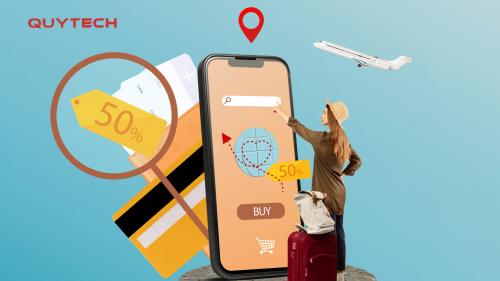App Development Cost Breakdown: What You Need to Know
Creating a mobile app can be a transformative step for any business, enhancing customer engagement, streamlining operations, and even creating new revenue streams. However, understanding the costs associated with app development is crucial for budgeting and planning purposes.
This article provides a detailed breakdown of app development costs, ensuring you have a clear picture of what to expect when budgeting for your mobile app project.
Key Factors Influencing App Development Cost
1. App Complexity
The complexity of your app is one of the most significant factors that influence its development cost. Apps can be broadly categorized into three levels of complexity:
Simple Apps: These are basic apps with minimal features, often serving a single purpose. Examples include simple calculators or note-taking apps. Development costs for simple apps can range from $10,000 to $50,000.
Moderate Apps: These apps have more features and require integration with third-party APIs. Examples include e-commerce apps, social media apps, and on-demand service apps. Development costs for moderate apps typically range from $50,000 to $100,000.
Complex Apps: These are feature-rich apps with advanced functionalities like real-time updates, custom animations, and complex backend systems. Examples include multi-vendor e-commerce platforms, advanced financial apps, and large-scale enterprise apps. Development costs for complex apps can exceed $100,000 and sometimes reach several hundred thousand dollars.
2. Platform Choice
The choice of platform significantly affects app development pricing. You can choose to develop your app for iOS, Android, or both. Developing for a single platform is less expensive than creating a cross-platform app. However, opting for both platforms can enhance your app's reach and potential user base.
iOS Development: Generally, iOS app development can be slightly more expensive due to the need for high-quality design and adherence to strict guidelines set by Apple.
Android Development: Android app development can be more time-consuming due to the need to ensure compatibility with a wide range of devices and screen sizes.
Cross-Platform Development: Using frameworks like React Native or Flutter can save costs by allowing code reuse across platforms. However, the initial development cost might be higher than single-platform development.
3. Design and User Experience
A well-designed app with an intuitive user interface can significantly impact user retention and satisfaction. Investing in a good design is crucial, but it can also add to the app development cost. Design costs include:
UI/UX Design: The process of creating a user-friendly interface and experience. Costs can range from $5,000 to $25,000 depending on the complexity and number of screens.
Branding and Graphic Design: Custom icons, logos, and other branding elements. This can add another $1,000 to $5,000 to your budget.
4. Development Team Location
The location of your development team plays a crucial role in determining app development pricing. Rates can vary significantly based on geographic location:
North America: $100 - $250 per hour
Western Europe: $80 - $200 per hour
Eastern Europe: $30 - $100 per hour
Asia: $20 - $80 per hour
Hiring app developers can reduce costs, but it’s essential to consider potential challenges like time zone differences, language barriers, and varying quality standards.
5. Backend Infrastructure and APIs
A robust backend infrastructure is essential for apps that require user authentication, real-time data sync, or integration with third-party services. Costs associated with backend development include:
Server Costs: Depending on the expected load, server costs can range from $70 to $320 per month.
API Integration: Integrating third-party APIs for payment gateways, social media sharing, or other functionalities can cost between $1,000 and $5,000.
6. App Maintenance and Updates
Once your app is live, ongoing maintenance is crucial to ensure it remains functional and up-to-date. Maintenance costs typically include:
Bug Fixes and Performance Optimization: Regular updates by the app development company to fix bugs and optimize performance. This can cost between $5,000 and $10,000 annually.
New Features and Enhancements: Adding new features based on user feedback or market trends can add to the maintenance budget.
Hidden Costs to Consider
1. App Store Fees
Both the Apple App Store and Google Play Store charge fees for app submissions. The Apple App Store charges a $99 annual fee, while the Google Play Store charges a one-time $25 fee.
2. Marketing and Promotion
To ensure your app reaches its target audience, investing in marketing and promotion is essential. Costs can vary widely based on your strategy but can easily range from $5,000 to $20,000 for a robust marketing campaign.
3. Legal and Compliance
Ensuring your app complies with legal standards and regulations can incur additional costs. This includes GDPR compliance, copyright issues, and other legal considerations. Legal expenses can range from $1,000 to $10,000 depending on the complexity.
Strategies to Optimize Your Mobile App Budget
1. Define Clear Requirements
Having a clear vision of your app’s features and functionalities from the start can prevent scope creep and keep costs in check. Create detailed documentation and wireframes to communicate your ideas effectively to the development team.
2. Prioritize Features
Identify the core features that are essential for your app’s initial release. Additional features can be added in subsequent updates based on user feedback and demand. This approach helps manage initial costs and allows for iterative improvements.
3. Choose the Right Development Partner
Selecting an experienced and reliable development partner can save time and money. Look for a team with a proven track record, good reviews, and a transparent pricing model. Consider the benefits of working with an agency versus hiring freelance developers.
4. Leverage Existing Solutions
Utilize existing solutions and libraries whenever possible to reduce development time and costs. For instance, using pre-built templates, plugins, and third-party services can expedite the development process and minimize expenses.
Conclusion
Understanding the various factors that influence app development costs is crucial for effective budgeting and planning.
By considering the complexity of your app, platform choice, design requirements, development team location, backend infrastructure, and ongoing maintenance, you can develop a realistic budget for your mobile app project.
Additionally, being aware of hidden costs and employing strategies to optimize your budget can further enhance the financial efficiency of your app development process.
Investing in a well-thought-out mobile app can yield significant returns for your business. By navigating the complexities of app development pricing and making informed decisions, you can create a successful app that meets your business goals and provides value to your users.









Comments